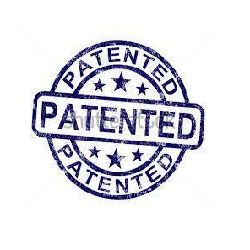Introduction
The Patent Cooperation Treaty (PCT) provides us with an overview of an international treaty which is duly administered by the World Intellectual Property Organization (WIPO). The Patent Cooperation Treaty (PCT) is an international treaty with more than 148 Contracting States. It is administered by the World Intellectual Property Organization.(WIPO).The PCT is an international treaty which provides a system for filing a patent application and allow us to obtain patents in multiple countries around the world on the basis of a single patent application. As PCT simplifies the procedure for obtaining Patent protection in many countries, making it more efficient and economical for: a) Users of the patent system i.e an applicant/(s) and inventors b) National Offices. The PCT simplifies the patent filing process for applicant and the ultimate decision to grant a patent vests exclusively with each national or regional Patent Office. A single PCT application has the same legal effect as a national Patent application in each of the PCT Contracting States. Without the PCT, we would have to file a separate patent application in each country separately and independently. PCT save applicant time, effort and expense of preparing separate applications in various languages and file it in different signatories states. Patent Cooperation Treaty- file an application under the PCT, directly or within the 12-month period as provided for by the Paris Convention from the filing date of a first application, which is valid in all Contracting States of the PCT.
Need for Introducing PCT
PCT provides users with a worldwide system for the simplified and effective filing of patent applications,
- To bring the world within reach.
- Removes major costs and provides users with additional time to consider their various Patent granting options.
- Provides a strong basis to the user for Patenting decisions.
- Is effectively used by the world’s major corporations, universities and research institutions when they seek international patent protection.
Basic Features of PCT System
- Formal examination done by one office.
- Retrieval is carried out by one office.
- International publication done by one office.
- Examination and authorization finished by national office.
- Single application with legal effect in all PCT countries.
- 148 countries and 4 regional patent systems.
PCT Advantages
The PCT, as an aid of the international patent system, provides a worldwide system for simplified filing and processing of patent applications which helps in,
- A single application in single language filed in a single country called the international application.
- Provides a strong basis for patenting decisions to the users.
- Harmonizes formal requirements.
- Used by the world’s major corporations, universities and research institutions when they seek international patent protection.
- This single application has the effect of filing simultaneously in different countries (designated countries).
- Protects applicant from certain inadvertent errors.
- Evolves to meet user needs.
PCT Filing Process
STEP 1 – Filing of Local application
First applicant need to file patent application in home country.
STEP – 2 Filing of PCT application
Applicant need to file a national application along with international application in one language and need to pay single set of fee. PCT application is to be filed within 12 months after filing a national application. Priority date is given by the national office.
PCT application can also be directly filed to RO (receiving office) office of WIPO.
STEP – 3 Checking for Defects
The check is conducted by the receiving office, it is divided into two parts. The first part concerns the requirements of according an international filing date as set out in Article 11(1) of PCT. The second part concerns the formal and physical requirements under Article 14.
STEP – 4 International Search Report
Application is transmitted to an International searching authority. An International Searching Authority search an application and check for a prior art and state of art. They made it clear whether or not document that have been presented is eligible for grant of patent. They establish it on the basis of their written opinion. Within 16 months from the date of filing, ISR (International search report) will give search report with written opinion.
{ Prior art: everything which has been made available to the public anywhere in the world by means of written document which is capable of being of providing assistance in determining that the claimed invention is new or not and also that it does or does not involve an inventive step.}
STEP 5 International Publication
After submitting the necessary document user application is published, after the completion of 18 months. Before that an application is kept secret. International Bureau (IB) of WIPO publishes the PCT application. Content of application is disclosed to the general public.
STEP – 6 International search
Request for supplementary search is filed by the application before completion of 19 months from the priority date. Under this applicant demand for international preliminary examination.
STEP – 7 International Preliminary Report
Search authority will give report on patentability, whether or not patent is to be granted. This is to be given within 28 months by the competent authority.
STEP – 8 Enter in National Phase
After completion of all necessary requirements patent is granted by national office and likewise patent is granted in all other contracting states. Patent is granted to the applicant before the completion of 30 months .After this applicant can seek protection.
Comparison between PARIS Convention & PCT
e-PCT
Apart from giving application in papers WIPO has evolved new concept of filing of an e-PCT which is easier for both applicant and patent office.
- Online e-filing portal that provides PCT services for applicants and office both.
- It was made available since May, 2011.
- It provides secure and direct interaction with PCT applications maintained by the International Bureau.
- Applicants can now easily conduct most PCT transactions electronically mode.
PCT Challenges
- Improving the quality of PCT international phase work products.
- Building trust between Patent offices, so that duplication of application in international phase and national phase processing can be reduced.
- Language issues faced by most countries:
- Helping developing countries benefit from the PCT.
- Making PCT accessible to applicants of all types from all Contracting States.
- Helping PCT users stay abreast of new developments and strategies
Conclusion
Patent Cooperation Treaty brought great revolution in field of invention and innovation for the inventor due to this PCT enjoyed great success and continued growth across the world. It has a near global membership of 148 Contracting States with millions of inventors, big and small, who aids to the world’s technological advancement through the use of the PCT and national patent systems. The PCT brought revolution in the way through which patents are obtained across the world. The time delay feature of the PCT preserves user patent options, delays costs, giving user an additional time to obtain financing and assess commercial, licensing and partnership opportunities.
The PCT helps user to obtain patents for his invention/(s). It is the smart Patenting Solution – Applicant best option for obtaining patent on a global scale.
Suggestions
- It is very much important that the PCT system remain relevant to the needs of applicants and national Offices.
- Legal enhancements have been made over the years in order to further simplify the operations of the PCT system.
- Information technology have been introduced creating efficiency gains and reduced costs for applicants, national Offices and the International Bureau of WIPO.
- The operations and performance of the PCT system should be regularly monitored and assessed for the business needs and experiences of applicants, national Offices and the International Bureau of WIPO.
- PCT should try to bring harmony among the nations so that more and more technological advancement could be done, and also inventor could get motivated to do unique invention.
- PCT should also reward in terms of monetary benefit to those inventor whose invention is fabulous so that more technological advancement could be
Reference
World Intellectual Property Organization (WIPO).







